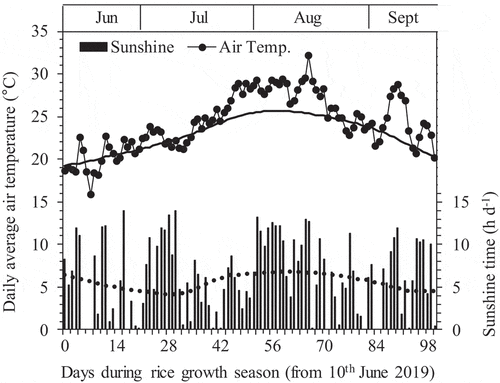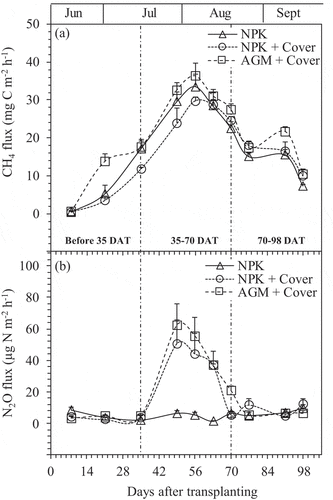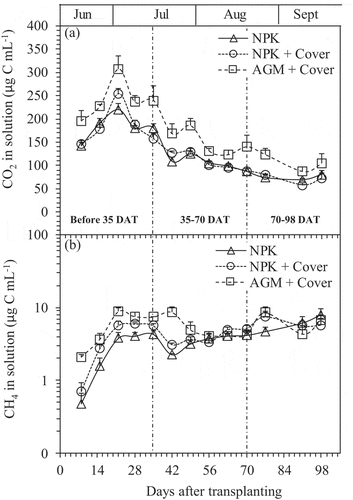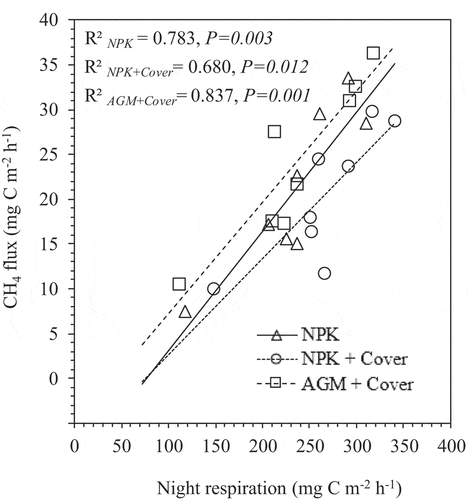Figures & data
Figure 1. Daily sunshine time (■) and average air temperature (●) during the experimental period from 10th June to 18 September 2019 in Tsuruoka, Japan. The bold and dashed lines crossing air temperature and sunshine time are the daily average values for 1981–2010, respectively. Data were derived from the Japan Meteorological Agency.

Table 1. Cumulative CH4 and N2O emissions during early (before 35 DAT), middle (35–70 DAT), and later (70–98 DAT) rice growth stages, and seasonal total cumulative emissions as affected by Azolla application practices
Figure 2. Changes in CH4 (a) and N2O (b) fluxes from plots treated with chemical fertilizer (NPK), NPK plus Azolla cover (NPK + Cover), and Azolla as green manure plus Azolla cover (AGM + Cover) throughout the experimental period. Vertical bars indicate standard error (n = 4). Dashed lines show the early, middle and later rice growth stages.

Figure 3. Changes in the concentration of CO2 (a) and CH4 (b) dissolved in the soil solution in plots treated with chemical fertilizer (NPK), NPK plus Azolla cover (NPK + Cover), and Azolla as green manure plus Azolla cover (AGM + Cover) throughout the experimental period. Vertical bars indicate standard error (n = 4). Dashed lines show the early, middle and later rice growth stages.

Figure 4. Plant height (a), tiller number (b), and leaf color measured in SPAD values (c) of rice plants from plots treated with chemical fertilizer (NPK), NPK plus Azolla cover (NPK + Cover), and Azolla as green manure plus Azolla cover (AGM + Cover) throughout the experimental period. Vertical bars indicate standard error (n = 4). Dashed lines show the early, middle and later rice growth stages.

Table 2. Rice grain yield, harvest index, GWP (CH4 and N2O emissions), and yield-scaled GWP as affected by Azolla application practices
Figure 5. Relationship between daily CH4 and night respiration (CO2) emission from plots treated with chemical fertilizer (NPK), NPK plus Azolla cover (NPK + Cover), and Azolla as green manure plus Azolla cover (AGM + Cover) after 5 weeks rice transplanting (n = 8).

